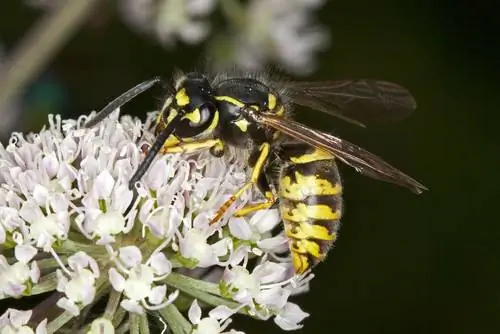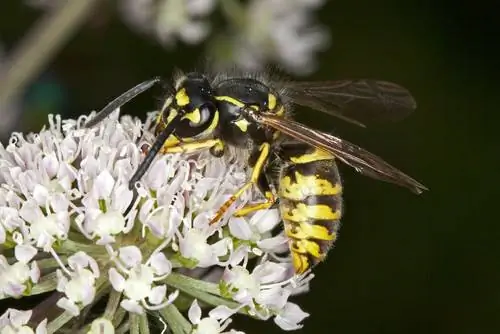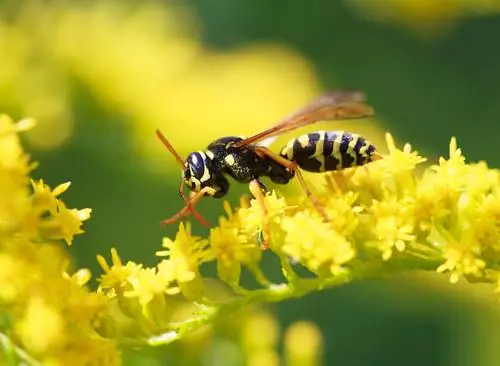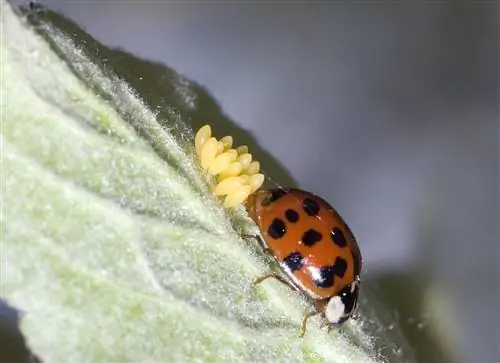- Author admin [email protected].
- Public 2023-12-16 16:46.
- Last modified 2025-01-23 11:22.
Wasps are a rather annoying topic for many people. While bees are currently enjoying a particular increase in sympathy because of their need for protection, wasps still have a reputation for being just a nuisance. They are also valuable beneficial insects for the garden.

Do wasps also pollinate flowers?
Wasps help the reproduction of some plant species by pollinating flowers. They feed primarily on flower nectar and visit special flowers that are easily accessible to them, such as ivy or figwort. This adaptation of flowers to wasps is called sphecophilia.
Unimagined services of the wasp
When they persistently join us at the garden table and fight over cakes, ice cream and grilled meat, we naturally quickly complain about wasps. Especially from August onwards, when they are busy caring for the state's breeding animals, they can behave very offensively. In case of doubt, i.e. if they feel attacked, they are not shy about stinging. Unlike bees, they can sting several times in their lives.
Nevertheless, it is advisable to become friends with the animals to some extent. Firstly, angry confrontation is not really wise given the danger that it poses in a mass group. And secondly, they also provide valuable services in the garden. This includes above all:
- Flower pollination
- Pest Control
Because they pounce so confidently on our Danish pastries and fruit salads in late summer, wasps give many people the impression that they are simply parasites. However, their main food source is still flower nectar. The adult workers feed primarily on it, and also on honeydew and sweet plant juices. They even specialize in very specific types of flowers - including wasps. Biologically, this adaptation of flowers to wasps is called sphecophilia.
Flowers that are sphecophilic, i.e. offer wasps without suction tools particularly easy access to their nectar, are usually brownish, greenish or white in color and have a shape that is easy for the wasps to reach, for example a throat or umbel shape. Typical wasp flowers include ivy, brownwort and ragwort. When collecting nectar, the animals also take on the task of pollination.
In addition to these positive properties, wasps also destroy a lot of pests in the garden. In contrast to the adults, the larvae need a lot of animal protein to grow. The workers diligently collect caterpillars of various pests, spiders, grasshoppers and aphids, which they chew and feed to their offspring.






